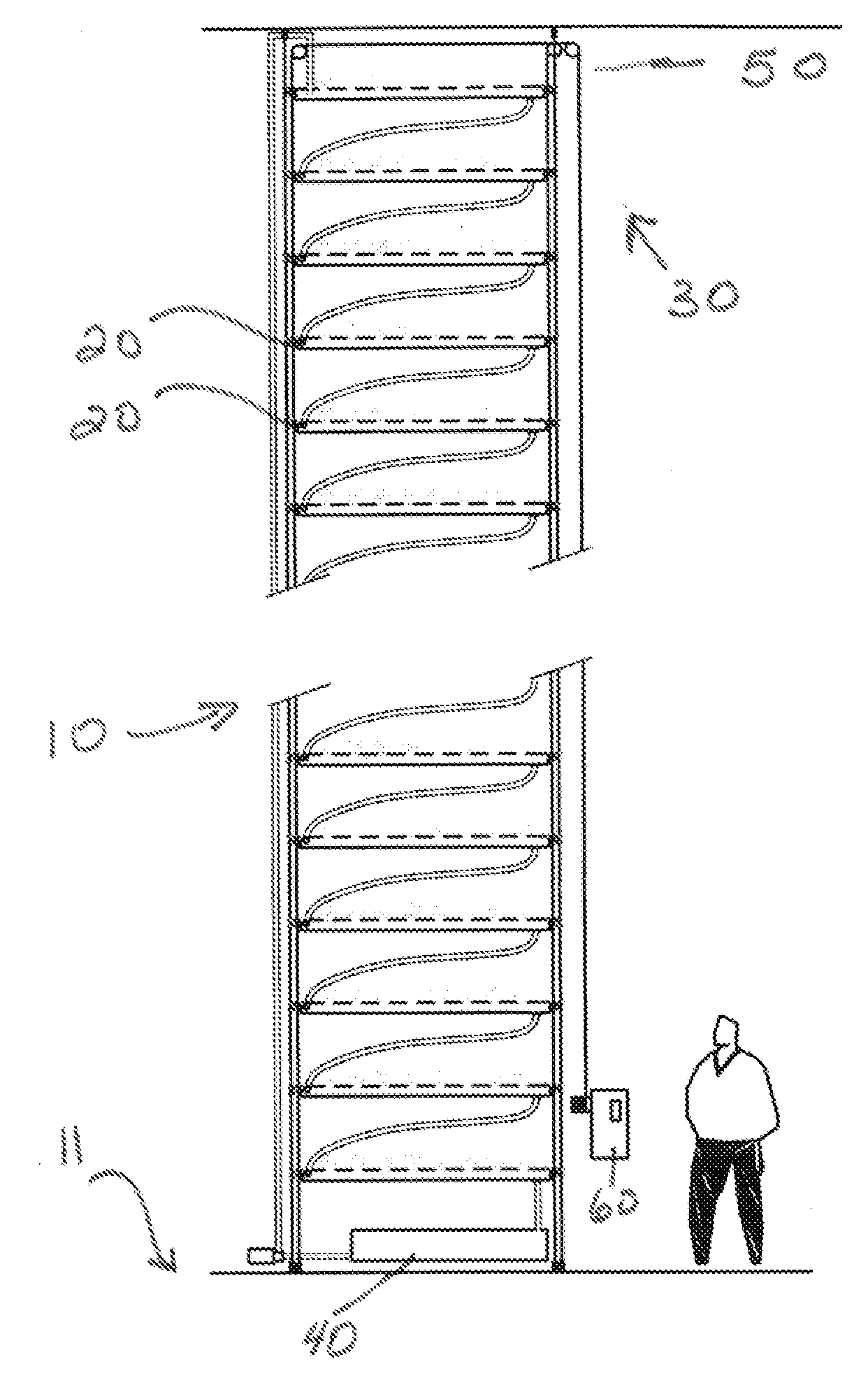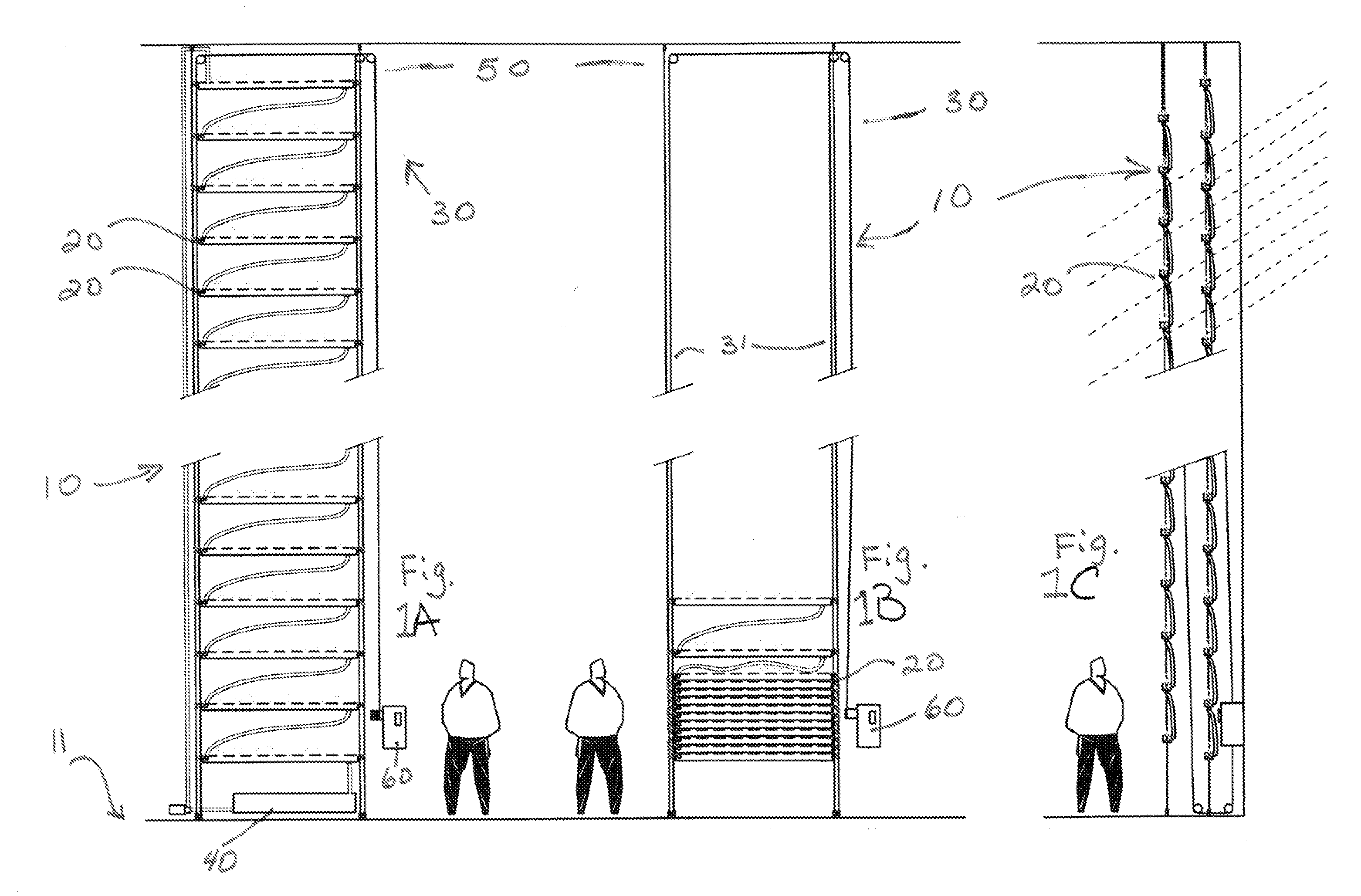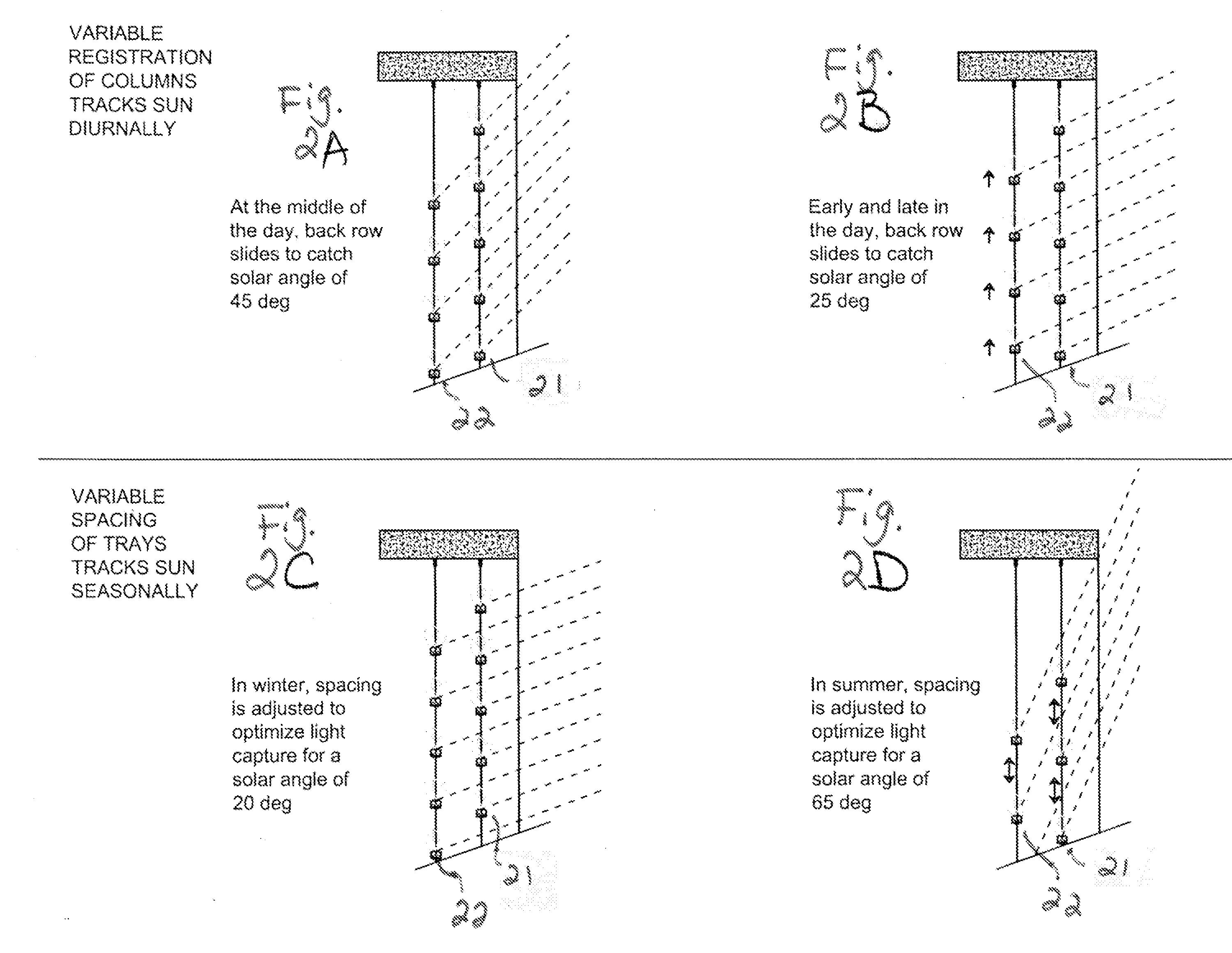Vertically Integrated Greenhouse
a vertical greenhouse and greenhouse technology, applied in the field of vertical greenhouses, can solve the problems of increasing traffic congestion, air pollution and carbon emissions, reducing yields, and increasing environmental pressure, and reducing solar heat gain. , the effect of reducing the effect of urban heat island
- Summary
- Abstract
- Description
- Claims
- Application Information
AI Technical Summary
Benefits of technology
Problems solved by technology
Method used
Image
Examples
first embodiment
[0062]In the VIG-system (FIGS. 3-10, discussed below), termed the “collapsible” or “shade system” embodiment, plant cable lift systems are used to raise and lower trays. In such an embodiment, the trays are fastened to drive train guide wires by way of fasteners. To mount the trays to the drive train, L-shaped brackets may be attached to the top of the tray at both ends, and these brackets may have clevis ends bolted into them. The clevis ends can be opened with a latch and the trays removed from the guide wires. The wires may have set screw collars placed at measured distances that hold up the trays. The screw collars have a larger outside diameter than the inside diameter of the clevis openings to ensure the trays do not slip down the wires. The specific kind of fastener is not critical, and the use of other kinds of fasteners to secure the trays to the tray suspension system is within the scope of the present invention.
[0063]In this embodiment of the invention, there are two sets...
second embodiment
[0065]In the invention (FIGS. 11-16), termed the “conveyer” embodiment, a hollow pin chain drive serves to circulate the trays through the greenhouse. In this embodiment, L-shaped gutter brackets have a pin bolted through them. The pin is attached through a hollow pin chain link on the chain which drives the system. The link and pin assembly has springs to maintain tension so that the trays can be removed but will not slip out of the chain drive. The trays can be removed by unbolting the hanging pin at either the chain or gutter bracket points.
[0066]The chain drive is mounted on cogs which are attached to arms (or cog hangers) that hold up the entire system. The chain drive can be embedded in a baffled vertical gutter on the drain or down slope side. Baffling in the return gutter can be used for water containment and channeling to avoid exposing the chain to water flows. The hanging pin is shaped so as to permit the trays to maneuver as they travel in the conveyor system. The hangin...
PUM
 Login to View More
Login to View More Abstract
Description
Claims
Application Information
 Login to View More
Login to View More - R&D
- Intellectual Property
- Life Sciences
- Materials
- Tech Scout
- Unparalleled Data Quality
- Higher Quality Content
- 60% Fewer Hallucinations
Browse by: Latest US Patents, China's latest patents, Technical Efficacy Thesaurus, Application Domain, Technology Topic, Popular Technical Reports.
© 2025 PatSnap. All rights reserved.Legal|Privacy policy|Modern Slavery Act Transparency Statement|Sitemap|About US| Contact US: help@patsnap.com



